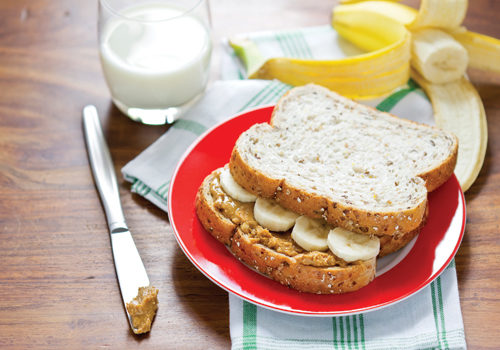A peanut butter sandwich on whole-wheat bread, washed down with a nice tall glass of cold milk sounds like a delicious and healthy lunch for kids and adults alike. Unfortunately, for nearly 15 million Americans today, that meal could lead to severe health consequences. Peanut, wheat and dairy allergies and intolerances are becoming more and more commonplace; between 1997 and 2011, food allergies among children spiked 50% (1). Though there are many theories as to why they are becoming more prevalent, a direct cause is still unknown. But the fact is, for those with peanut allergies, dairy intolerances or gluten sensitivities, these conditions are very real and can disrupt and even threaten their daily lives.
The natural products industry has seen the difficulties many families encounter when trying to prepare delicious, nutritious and safe food and has taken on the task of ensuring there are options on the market for them. Not only are companies providing allergen-free staples like wheat-free bread, sunflower butters and dairy-free milk, but also comforting and tasty non-necessities like dairy-free cream cheese and gluten-free brownie mix. As Laura Kuykendall, director of marketing for Glutino, Boulder, CO, believes, following a sensitive diet “should not mean ‘doing without.’”
Indeed, many manufacturers of “-free” foods cite taste as their number one priority, delivered through the use of quality ingredients and testing out a variety of recipes until the finished product is both safe and delicious. Jennifer Ramstad, director of marketing for Pamela’s, Ukiah, CA, remarks on how the company’s founder and CEO, Pamela Giusto-Sorrells, “believed early on that gluten-free and great taste can be one and the same.”
Mark Hetzel, president of Moon Rabbit Foods, 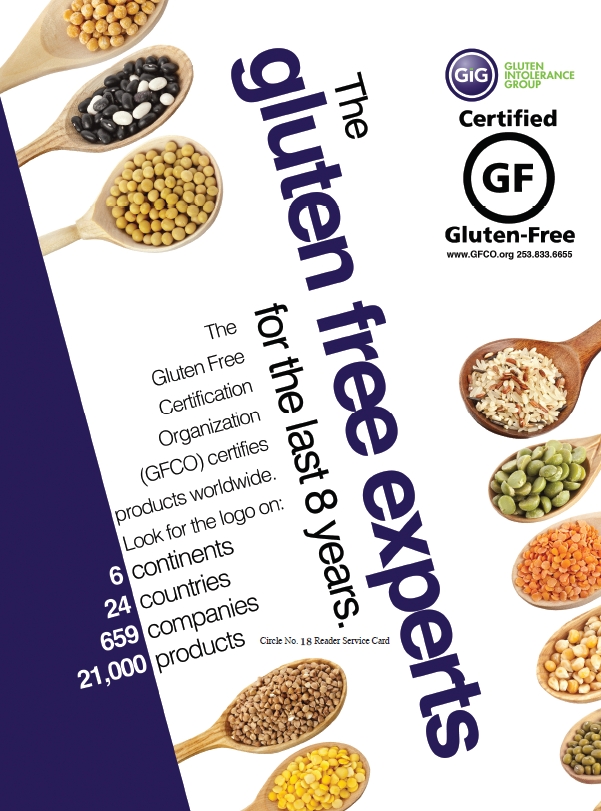 Barnardsville, NC, says his company’s core focus is on the product’s taste and texture; a result, no doubt, of his days as executive pastry chef at Four Seasons Resort Maui. As food science develops more ingredients for gluten-free recipes, Hetzel says he closely scrutinizes them to ensure they live up to Moon Rabbit standards before incorporating them into their products. “Quality of the finished product continues to be priority one and that requires a commitment to source the best ingredients,” he says.
Barnardsville, NC, says his company’s core focus is on the product’s taste and texture; a result, no doubt, of his days as executive pastry chef at Four Seasons Resort Maui. As food science develops more ingredients for gluten-free recipes, Hetzel says he closely scrutinizes them to ensure they live up to Moon Rabbit standards before incorporating them into their products. “Quality of the finished product continues to be priority one and that requires a commitment to source the best ingredients,” he says.
Other companies have taken it upon themselves to scientifically develop new ways to make their products live up to their customers’ and their own high standards. GO Veggie!, North Kingstown, RI, according to director of marketing Jamie Schapiro, was the first to create a low-fat, cholesterol- and lactose-free dairy alternative 30 years ago, and has continued using food science to create “the best tasting and melty cheese alternative available.”
Ingredient quality is so important that Don Stinchcomb, president of Purity Foods, Hudson, MI, says his grains go through seven tests before being given the stamp of approval, and he doesn’t hesitate to reject ingredients that do not meet his standards; Purity Foods rejected nearly one million pounds of grains in 2011!
The Gluten-Free Boom
Perhaps, it is this dedication to great quality and taste that has the “-free” foods market booming, especially when it comes to gluten-free foods. According to Kuykendall, only about one in every 133 Americans has celiac disease, and those with other gluten sensitivities comprise six to 10% of the population. However, many people without any sort of relevant diagnosed medical condition are also following the diet, which has sparked a debate as to whether or not a gluten-free lifestyle is healthier, or healthy at all for that matter, for the general public.
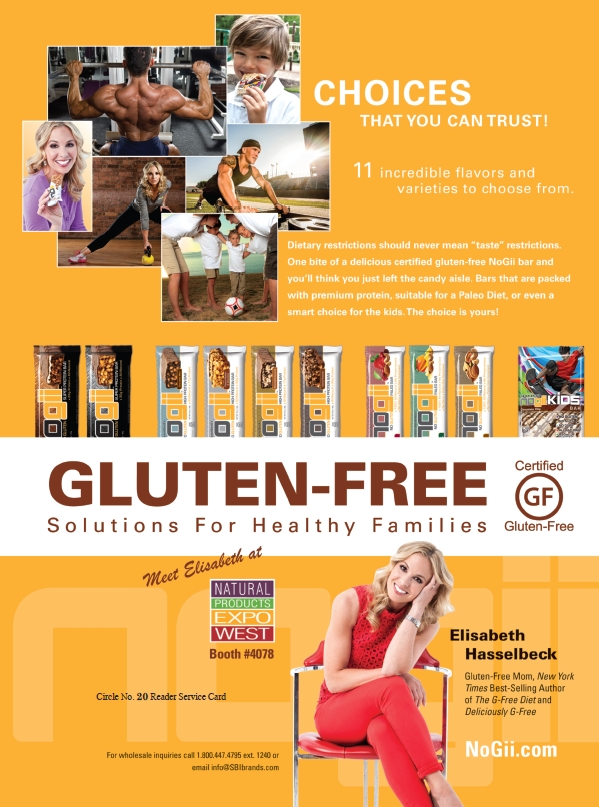 “There is a misconception that a gluten-free diet is a healthier diet, may improve athletic performance and help you lose weight,” notes Cynthia Kupper, executive director for Gluten Intolerance Group, Auburn, WA. “None of these ideas are true.” She explains that the reason people may lose weight on a gluten-free diet is usually because they have omitted gluten-containing products, resulting in an overall caloric decrease, not because of the lack of gluten itself. In fact, some gluten-free baked goods are actually higher in calories than their gluten-containing counterparts, says Gael Orr, communications manager for Once Again Nut Butter, Nunda, NY. She thinks that those who switch to gluten-free foods for weight-loss may actually “be making food choices that are higher in calories and thus sabotaging their efforts.”
“There is a misconception that a gluten-free diet is a healthier diet, may improve athletic performance and help you lose weight,” notes Cynthia Kupper, executive director for Gluten Intolerance Group, Auburn, WA. “None of these ideas are true.” She explains that the reason people may lose weight on a gluten-free diet is usually because they have omitted gluten-containing products, resulting in an overall caloric decrease, not because of the lack of gluten itself. In fact, some gluten-free baked goods are actually higher in calories than their gluten-containing counterparts, says Gael Orr, communications manager for Once Again Nut Butter, Nunda, NY. She thinks that those who switch to gluten-free foods for weight-loss may actually “be making food choices that are higher in calories and thus sabotaging their efforts.”
Stinchcomb agrees, noting how some gluten-free goods provide “empty calories” due to their lack of nutrients, including fiber, iron, folate, calcium, vitamin B12 and zinc. The lack of fiber, he says, is especially dangerous as it can cause digestion issues, something gluten-intolerant people are already struggling with.
These types of deficiencies are to be expected with any sort of special or restrictive diet, says Ramstad. To compensate, she suggests consumers look for products that contain nutritional boosts: “For example, Pamela’s Pizza Crust Mix and Biscuit & Scone Mix contain 13 grams of whole grains per serving, and Whenever Bars include chia seeds for a fiber boost.”
Stinchcomb says that it is important to talk to a medical doctor or nutritionist about how to best fill in any nutrient gaps, whether through a varied diet or supplements. Concerning non-celiac patients going gluten-free, he quotes Stefano Guandalini, M.D., president of the North American Society for the Study of Celiac Disease, who said, “Someone who needs to be on a gluten-free diet and is closely monitored can benefit tremendously from it. But for everyone else, embracing this diet makes no sense.”
Despite these challenges, David Rosenberg, 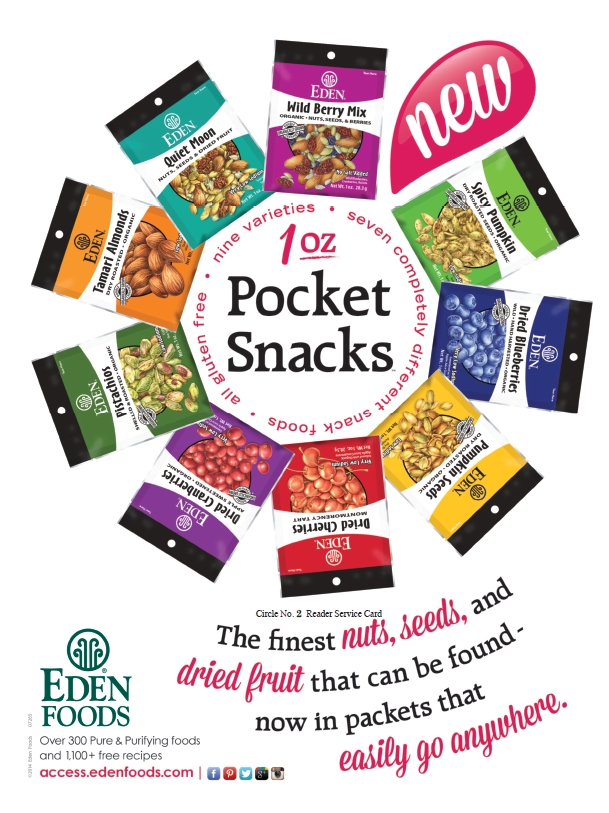 Living Now category manager for NOW Foods, Bloomingdale, IL, explains that making a gluten-free diet healthy is all about making the right product choices, as some gluten-free baked goods simply do not have quality nutritional profiles for the average healthy individual. “It’s all about balance, moderation and making the right decisions,” he says.
Living Now category manager for NOW Foods, Bloomingdale, IL, explains that making a gluten-free diet healthy is all about making the right product choices, as some gluten-free baked goods simply do not have quality nutritional profiles for the average healthy individual. “It’s all about balance, moderation and making the right decisions,” he says.
While Kupper doesn’t recommend a gluten-free diet for weight-loss, “it is shown that a gluten-free diet can be beneficial for other medical conditions—skin conditions, some psychiatric conditions, MS, etc.,” she says.
Hetzel agrees, noting that customer interactions and research have shown bloating, migraines and brain fog have been relieved through eliminating gluten.
Plus, much anecdotal evidence supports the use of a gluten- and casein-free diet in children with autism. It is hypothesized that some autism symptoms may be exacerbated by peptides that form when gluten and casein aren’t broken down. Autistic individuals often have leaky gut syndrome, which may allow these peptides to leave the intestines, enter the bloodstream and affect the nervous system.
Though the experts disagree on whether or not “gluten-free is the way to be” for everyone, they are all pushing for more research to be conducted on the benefits of a gluten-free diet.
For now, there is still a major victory in the gluten-free marketplace to be celebrated. In August 2013, the U.S. Food and Drug Administration (FDA) announced a new definition of “gluten-free” for food labeling. Every company with a food item that it claims is “gluten-free” or any variation of the term must show that their product is less than 20 parts per million (ppm) gluten.
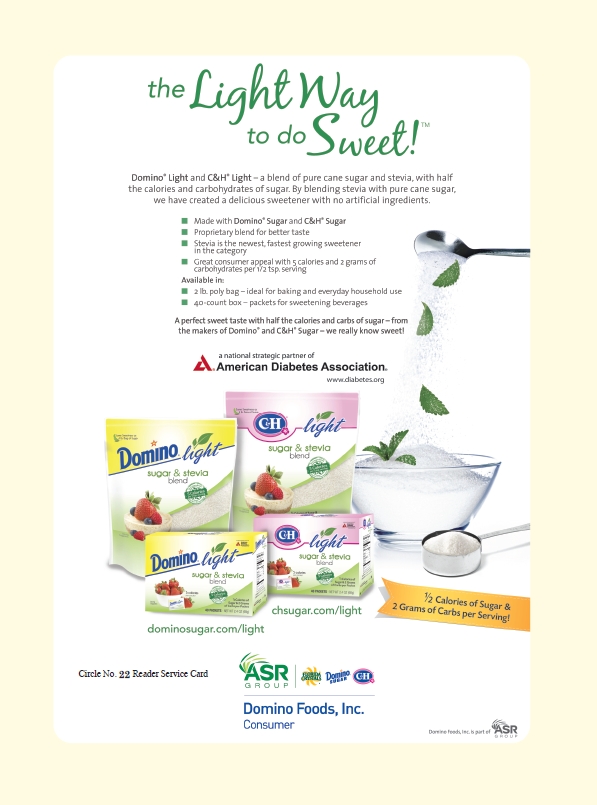 Kuykendall expresses how important FDA’s “landmark” decision was, because it not only holds brands accountable for how they label their products, but will also “enable consumers to navigate through the ever-expanding gluten-free food aisles more easily, and most importantly, more safely.”
Kuykendall expresses how important FDA’s “landmark” decision was, because it not only holds brands accountable for how they label their products, but will also “enable consumers to navigate through the ever-expanding gluten-free food aisles more easily, and most importantly, more safely.”
Many companies, like Pamela’s Products, Glutino and Moon Rabbit Foods, already insisted their products were well within this limit. Still, consumers can now breathe easy knowing that companies that cut corners in the past will either have to step up their game or be taken off the shelf.
Nutty for Nut-Free
When it comes to making nut-free foods, safety controls must be flawless. Nut allergies, especially to peanuts, are notorious for affecting children; some schools have even banned peanuts to ensure there is no cross-contamination, which could result in a dangerous allergic episode. Nut-free companies understand these risks and take them very seriously when manufacturing their products. “Our products are completely peanut and tree-nut free from field to jar,” explains Justin LaGosh, national brand manager for SunButter, Fargo, ND. Sunflowers for their sunflower seed butter are grown in the northern United States, where the growing season is not long enough for any nuts to grow, he says. In addition, their processing facility, as well as their offices, are tree-nut- and peanut-free.
Once Again Nut Butter, which manufacturers both peanut butter and other nut butters, is Certified Safe Quality Food, which means it follows specific cleaning procedures and color codes their manufacturing equipment to ensure there is no cross-contamination, Orr says. She adds that her company performs additional product testing to double-check the safety of the raw and finished materials. “We do not want to give our customers anything that we wouldn’t eat and feed our own children,” Orr says, verbalizing a foundation that many, if not all, natural products companies stand on.
Like gluten sensitivities, nut allergies have also become more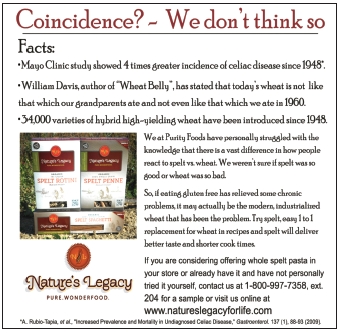 prevalent in recent years. According to a recent Food Allergy Research & Education (FARE) study, the number of U.S. children with a peanut allergy more than tripled between 1997 and 2008 (2). Orr doesn’t take these facts to mean that peanut allergies are spreading, but rather that “people in general are eating more nuts and nut butters due to the nutritional benefits,” resulting in a broader awareness of the allergy. LaGosh is unsure of the reasons for the increase in nut allergies, but he intends to let the expert allergists focus on that while he focuses on developing tasty solutions to the nut-allergy problem.
prevalent in recent years. According to a recent Food Allergy Research & Education (FARE) study, the number of U.S. children with a peanut allergy more than tripled between 1997 and 2008 (2). Orr doesn’t take these facts to mean that peanut allergies are spreading, but rather that “people in general are eating more nuts and nut butters due to the nutritional benefits,” resulting in a broader awareness of the allergy. LaGosh is unsure of the reasons for the increase in nut allergies, but he intends to let the expert allergists focus on that while he focuses on developing tasty solutions to the nut-allergy problem.
Scientists have been studying the uptick in food allergies and have developed a variety of theories. A popular hypothesis had been that women who ate peanuts while pregnant gave birth to children with peanut allergies. This hypothesis has recently been flipped upside-down thanks to a new study from Boston Children’s Hospital. After studying the records of 8,205 children, the researchers found that the rate of peanut allergy was significantly lower in children whose mothers ate peanuts during her pregnancy (3). In other words, those who didn’t eat peanuts were more likely to give birth to children who couldn’t eat peanuts! Though the main researcher, Michael Young, M.D., says the data are not strong enough for a cause-and-effect conclusion, he says with certainty that “peanut consumption during pregnancy doesn’t cause peanut allergy in children.” Good news for pregnant women craving peanut butter!
Moove Over, Dairy
This “use it or lose it” philosophy is responsible for lactose intolerance, which is found worldwide. The enzyme lactase breaks down and digests lactose, a disaccharide in milk; without it, the individual may experience mild to severe stomach discomfort, including gas, cramps, bloating and vomiting. Genetics play a role in whether or not the body will produce enough lactase. If a culture does not rely heavily on dairy as its food source (as is the case for many Asian cultures), it is more likely to be lactose intolerant (4).
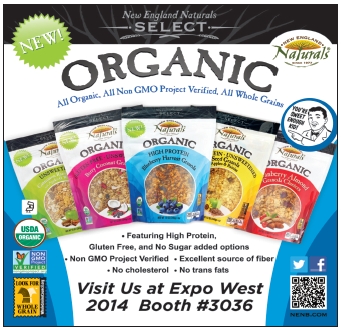 There are options for those who simply need to avoid lactose and not dairy altogether. Her company’s lactose-free products, says Jennifer Lynn Bice, CEO and president of Green Valley Organics, Sesbastopol, CA, are made with real grass-fed dairy, but the lactose is removed by adding the lactase enzyme to the milk, “where it ferments and breaks down the lactose into simple sugars.” In essence, Bice says, lactose-free dairy products contain pre-digested lactose, which will not give people with an intolerance any “tummy troubles.” For those who suspect they may have a dairy intolerance, Bice suggests eliminating lactose from their diet for 30 days to see if their symptoms subside.
There are options for those who simply need to avoid lactose and not dairy altogether. Her company’s lactose-free products, says Jennifer Lynn Bice, CEO and president of Green Valley Organics, Sesbastopol, CA, are made with real grass-fed dairy, but the lactose is removed by adding the lactase enzyme to the milk, “where it ferments and breaks down the lactose into simple sugars.” In essence, Bice says, lactose-free dairy products contain pre-digested lactose, which will not give people with an intolerance any “tummy troubles.” For those who suspect they may have a dairy intolerance, Bice suggests eliminating lactose from their diet for 30 days to see if their symptoms subside.
In addition to biologic necessity, many people are avoiding dairy to reap other health benefits like lowering cholesterol, says Schapiro. Eating dairy-free foods as part of a vegan or vegetarian diet, whether for health or on principle, he says, can “help prevent health conditions such as obesity, heart disease, cancer and hypertension.” However, cutting dairy eliminates a big source of protein and calcium (which are still present in lactose-free dairy products), so it’s important to bring those back into the diet somehow. When developing its cheese substitutes, Schapiro says GO Veggie! was able to “increase the levels of calcium and protein to achieve product nutritionals similar to or better than regular dairy.”
So, what exactly are dairy-free products made of? Adriane Little, marketing manager of Boulder Brands (maker of Earth Balance), Niwot, CO, explains that Earth Balance butter replacements are made from “a patented blend of expeller-pressed, non-GMO oils and natural flavor, 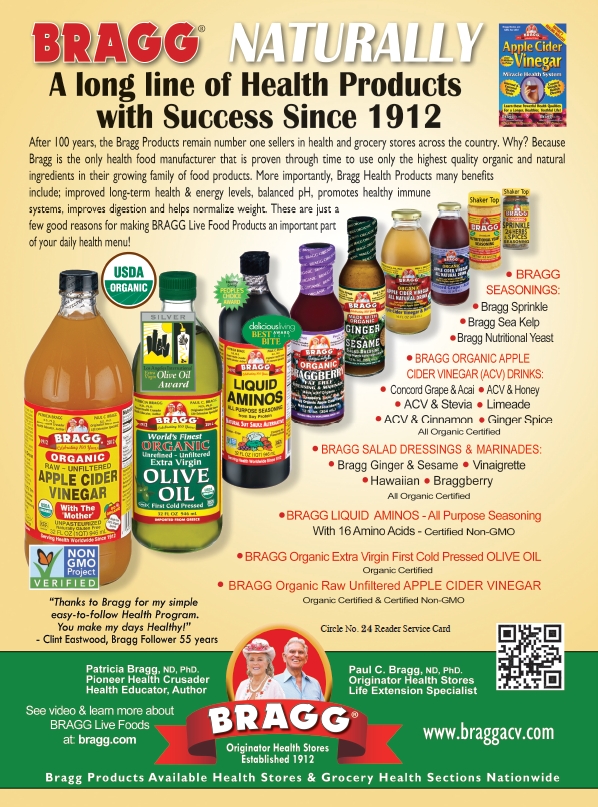 providing a delicious buttery taste and texture without the dairy.” GO Veggie!’s products, Schapiro explains, are made from ingredients like soy, rice and potato maltodextrin, corn starch and coconut oil. Soy is a popular choice for dairy-free products; soy milk, which has 7 g protein per serving, has become a staple.
providing a delicious buttery taste and texture without the dairy.” GO Veggie!’s products, Schapiro explains, are made from ingredients like soy, rice and potato maltodextrin, corn starch and coconut oil. Soy is a popular choice for dairy-free products; soy milk, which has 7 g protein per serving, has become a staple.
These combinations of ingredients allow for an end product with a very similar texture to that of dairy products like cheeses, which few companies have been able to successfully replicate. “We are committed to using the right amount and blend of our different ingredients to achieve the performance (namely, taste and melt) of dairy products,” explains Schapiro. He is proud to say one of the first things his customers notice is how similar the texture of his company’s dairy-free cream cheese product is to cream cheese.
Little says her company has worked diligently to find just the right combination of vegan spices and flavorings so consumers can have the real experience of eating milk products, without the milk. “It is about creating possibilities for those that may not have as many food choices, and empowering delicious eating,” says Little, summing up what all sensitive-diet food manufacturers believe.
Tips for Retailers
Once manufacturers have created those delicious eating possibilities, getting them to the customer is in the hands of the marketers and retailers. The approach to marketing allergy-friendly foods should be very different than selling foods and products for non-sensitive customers, says Ramstad. “Transparency and trustworthiness should be hallmarks of marketing efforts in order to ensure that the consumer is confident in the product and trusts the brand,” she says, adding that it is crucial for retailers to understand the requirements of those with food allergies. Retailers should also teach their in-store employees about foods for sensitive diets, allowing them to help someone new to their special diet “navigate this landscape and thus create a loyal shopper,” believes Ramstad.
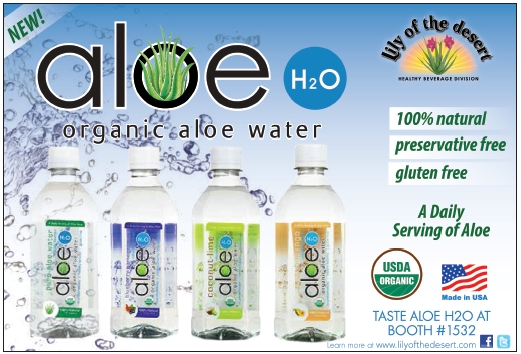 Schapiro agrees that floor staff education is big, but adds that general education for all customers, via Web site and in-store handouts, is equally critical. He also emphasizes the importance of sampling, which can “win crossover consumers and help negate predispositions to poor taste profiles.” Highlighting any potential benefits of incorporating the foods into a diet, such as weight-loss, is also key, he says.
Schapiro agrees that floor staff education is big, but adds that general education for all customers, via Web site and in-store handouts, is equally critical. He also emphasizes the importance of sampling, which can “win crossover consumers and help negate predispositions to poor taste profiles.” Highlighting any potential benefits of incorporating the foods into a diet, such as weight-loss, is also key, he says.
The consensus among manufacturers, however, is that the main focus for retailers should be having a dedicated section of the store for allergen-free foods. Having a “destination” section, as Schapiro calls it, both creates ease of access for consumers and the strongest merchandising opportunities. Large, clear signage for the special section will help customers new to the diet, or new to the store, navigate their way to the products they need.
LaGosh believes that having a special sensitive-diet foods section will not shift revenue in the store, but rather “can add overall revenue to any category within a retailer’s store.” So it is in the retailer’s best interest to ensure their selections are easily found and to fully understand the products in them. Rosenberg adds, however, that though these special sections are nice, “most shoppers purchase from multiple sections in the store.” So retailers should include allergen-free foods in their category’s respective aisles (e.g., gluten-free flour in the baking aisle), as well.
As with any product group, retailers should keep  their eye on upcoming trends. Convenience items are starting to pop up, especially among the gluten-free crowd. Kuykendall mentions how Glutino recently introduced a “just add water” baking mix that she says not only has the convenience factor, but also protects against cross-contamination. Gourmet flavors and products with an “artisan” feel are also coming to the forefront, says Schapiro.
their eye on upcoming trends. Convenience items are starting to pop up, especially among the gluten-free crowd. Kuykendall mentions how Glutino recently introduced a “just add water” baking mix that she says not only has the convenience factor, but also protects against cross-contamination. Gourmet flavors and products with an “artisan” feel are also coming to the forefront, says Schapiro.
Beyond these up-and-coming products is the quality of the products themselves. Ramstad says she has been tracking a trend that customers are no longer looking for just gluten-free or dairy-free, but also for “good-for-you and containing high-quality ingredients,” referring to all-natural and non-GMO ingredients. Because there are more options on the market than ever, customers can be more critical when it comes to choosing what they want to bring home to their families.
Furthermore, options are surfacing for those with multiple food sensitivities, says Kupper. “The incidence of carbohydrate intolerances is on the rise,” she says, “so more people are trying low-grain and grain-free diets, or needing gluten-free/egg-free, gluten-free/dairy-free, or other such combinations.” Bice also noticed that those with gluten intolerances seem to be lactose intolerant, as well. Accurately labeling products and store sections is the best way to appeal to this special group of customers, whose search for friendly foods is twice as difficult as those with only one food sensitivity.
 Retailers should also be on the lookout for entirely new subcategories in the allergy-friendly market. For example, customers are beginning to go soy-free for digestive or health concerns, says Little. Her company is now offering soy-free buttery spreads to appeal to this new consumer base. Rosenberg predicts an uptick in egg and corn avoidances, as well.
Retailers should also be on the lookout for entirely new subcategories in the allergy-friendly market. For example, customers are beginning to go soy-free for digestive or health concerns, says Little. Her company is now offering soy-free buttery spreads to appeal to this new consumer base. Rosenberg predicts an uptick in egg and corn avoidances, as well.
Stinchcomb comments on how his company’s spelt products are perfect for those trying to follow the FODMAP diet, which is slowly gaining popularity. It calls for an avoidance of Fermentables, Oligo-saccharides, Disaccharides, Monosaccharides and Polyols. Spelt is an ancient grain that can be used as an easy-to-digest alternative to wheat, an oligo-saccharide. Stinchcomb suggests that following a FODMAP protocol may even be a possible alternative to a gluten-free diet for those with mild, undiagnosed sensitivities: “They could try an ancient grain like spelt and at least determine if the problem is truly associated with gluten.”
Though it is always in the customer’s best interest to consult a medical professional, retailer-provided education and support will be appreciated by those uncertain about their new special diet. WF
References
1. Food Allergy Research & Education, “Facts and Statistics,” www.foodallergy.org/facts-and-stats, accessed Jan. 14, 2014.
2. Food Allergy Research & Education, “Peanut Allergy,” www.foodallergy.org/allergens/peanut-allergy, accessed Jan. 15, 2014.
3. ScienceDaily, “Peanut and Tree Nut Allergy Incidence Lower Among Children Whose Mothers Ate Them During Pregnancy, Study Finds,” www.sciencedaily.com/releases/2013/12/131223181813.htm, accessed Jan. 16, 2014.
4. Go Dairy Free, “Lactose Intolerance: It’s Normal, not a Disease,” www.godairyfree.org/dairy-free-information/lactose-intoleranc, accessed Jan. 20, 2014.
Published in WholeFoods Magazine, March 2014

